
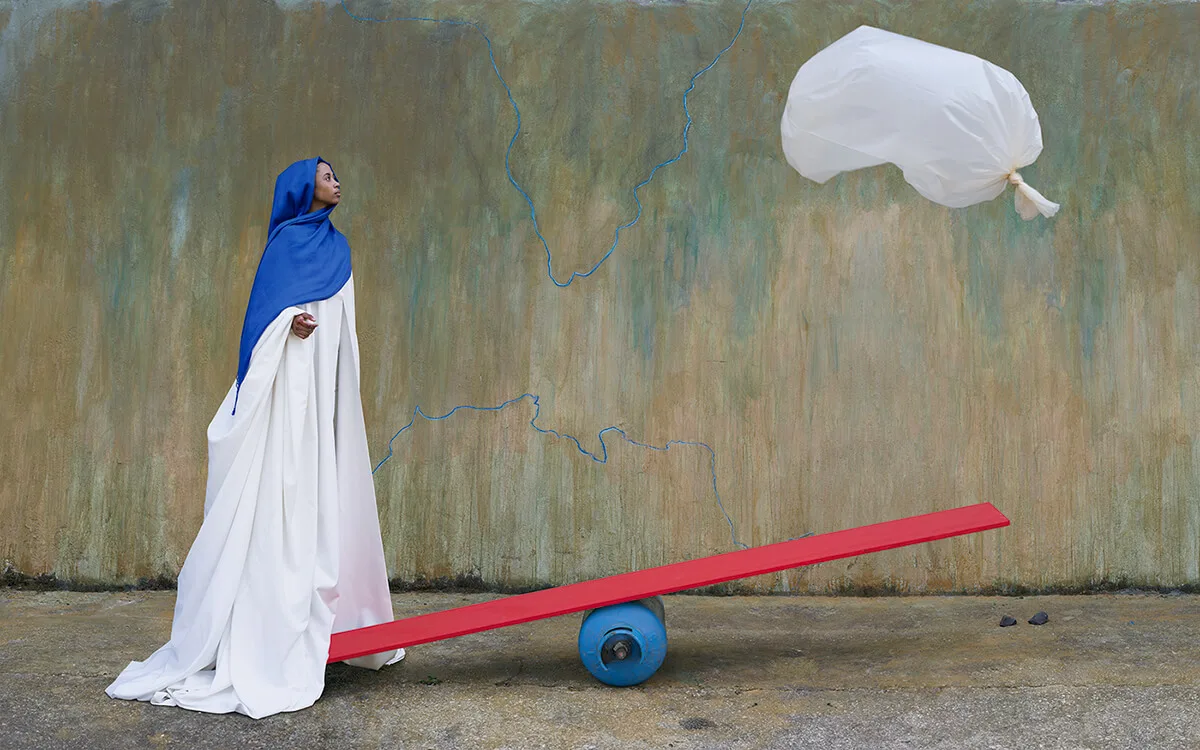
Ever since converting to Sufi Islam at the age of 40, photographer Maïmouna Guerresi has been on a very personal spiritual journey. In her work, characters float above the ground or merge together with nature, and every photo contains some sense of balance or peace. She tells Alex Kahl about her long search to find ways to visualize the abstract concept of spirituality.
All images ©Maïmouna Guerresi, and courtesy of Mariane Ibrahim Gallery.
The women in Italian-Senegalese photographer Maïmouna Guerresi’s work rarely conform to the rules or norms of our world. Many of them are giants, towering over even the tallest trees, while others float above the ground. Some have roots growing from their heads or their feet as they merge with and become one with the nature around them. Each character gives the impression of a heightened awareness of, or a convergence with, their surroundings, and so every image exudes a sense of spirituality.


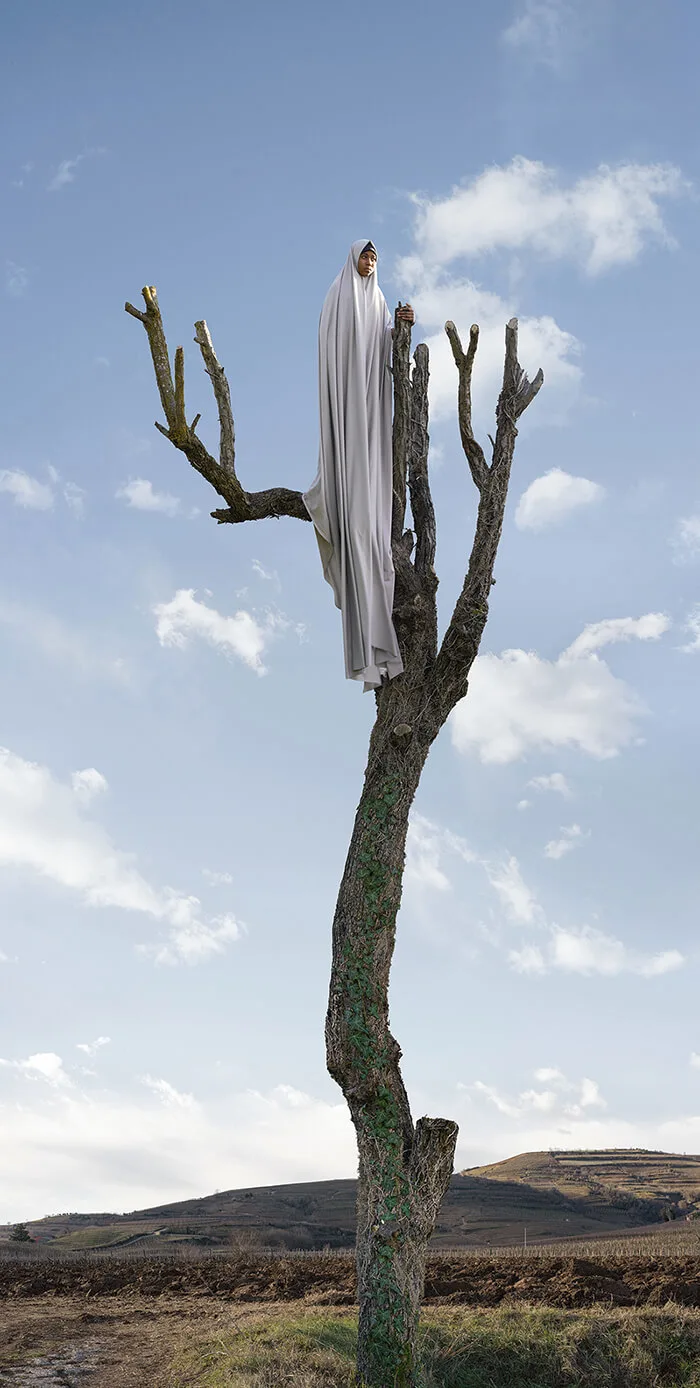
Spirituality has been at the heart of every aspect of Maïmouna’s life ever since she converted to Sufi Islam at the age of 40. “At that point in my life, my spirit was ready to undertake a journey into new forms of knowledge,” she says. “New practices, reflections, research and curiosity led to me learning more about Islam.” Through Shahadah, the Muslim declaration of faith and one of the five pillars of Islam, she took the name Maïmouna, and began to integrate herself into the community in the holy Senegalese city of Touba.
Sufism is a mystical form of Islam, and it emphasizes using introspection to find God, shunning materialism. It isn’t tied to any single strand of the religion, and encourages all believers to seek a powerful internal peace. For Maïmouna, converting to Sufism changed everything, and she was soon eager to express her newfound peace through her art.
My spirit was ready to undertake a journey into new forms of knowledge.
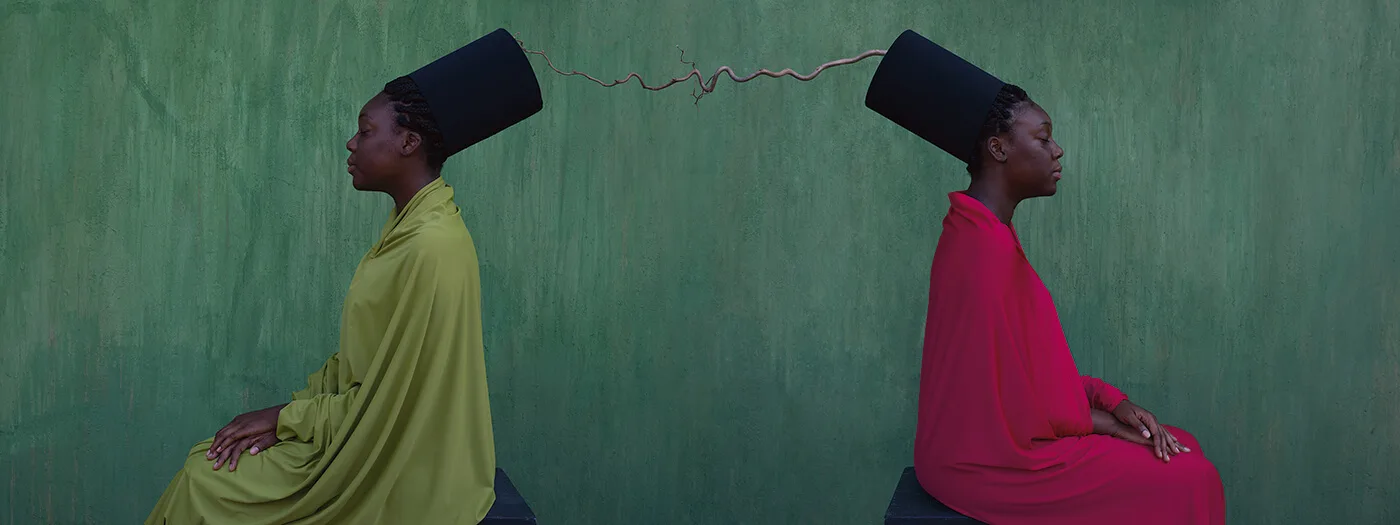
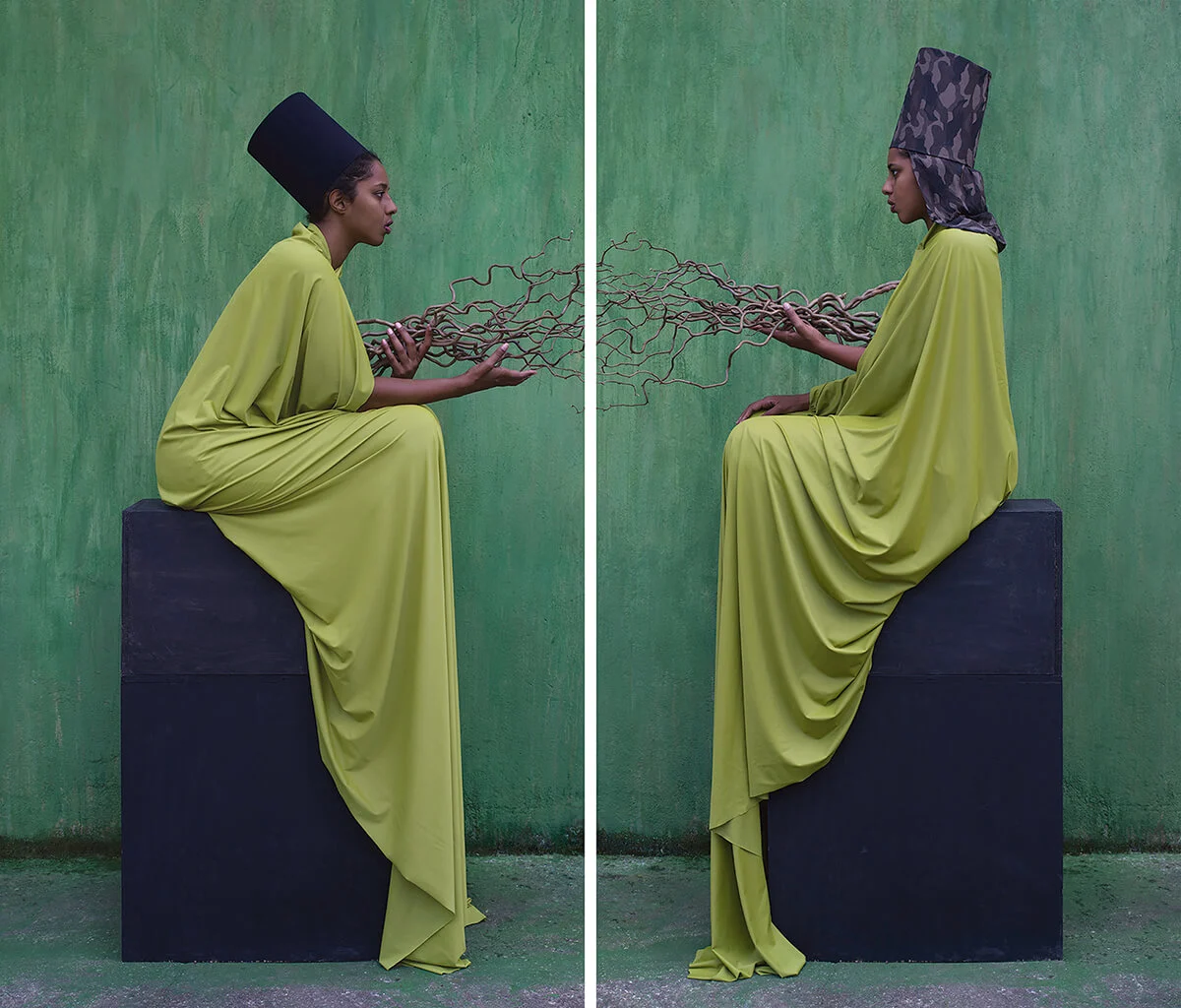
Spirituality is often seen as a connection to something bigger than ourselves, and Maïmouna’s photographic objective is to capture this sensation. Although she is herself often focused on her spiritual relationship with God, she’s trying to find ways to visualize spirituality in ways that anyone could relate to. It’s not easy, because abstract concepts, especially ones that are so personal and subjective, are difficult to represent visually, but Maïmouna has spent years looking for different ways to picture it.
Over time, she’s found that the best way to do so is to communicate feelings like peace and harmony by showing people experiencing a deep connection with nature or literally moving beyond their physical bodies into something more.
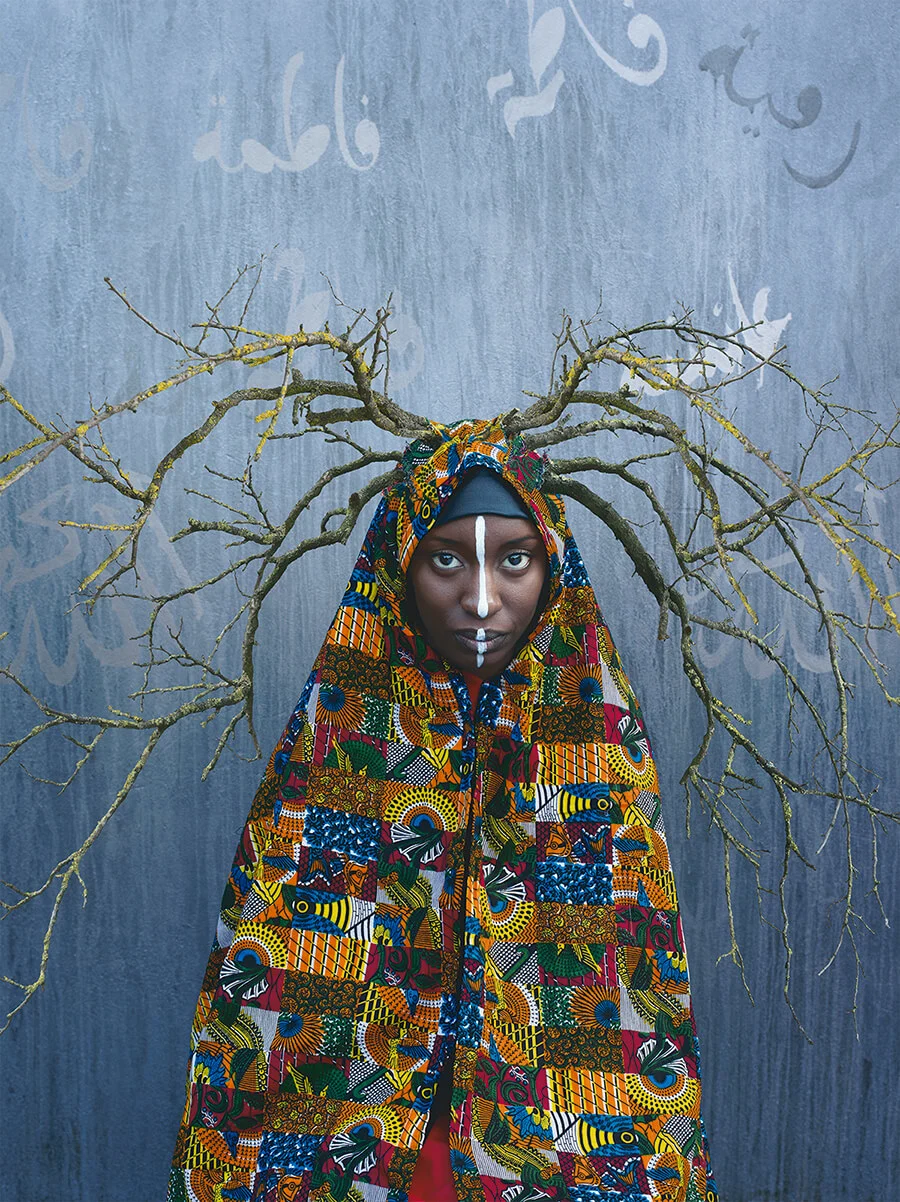
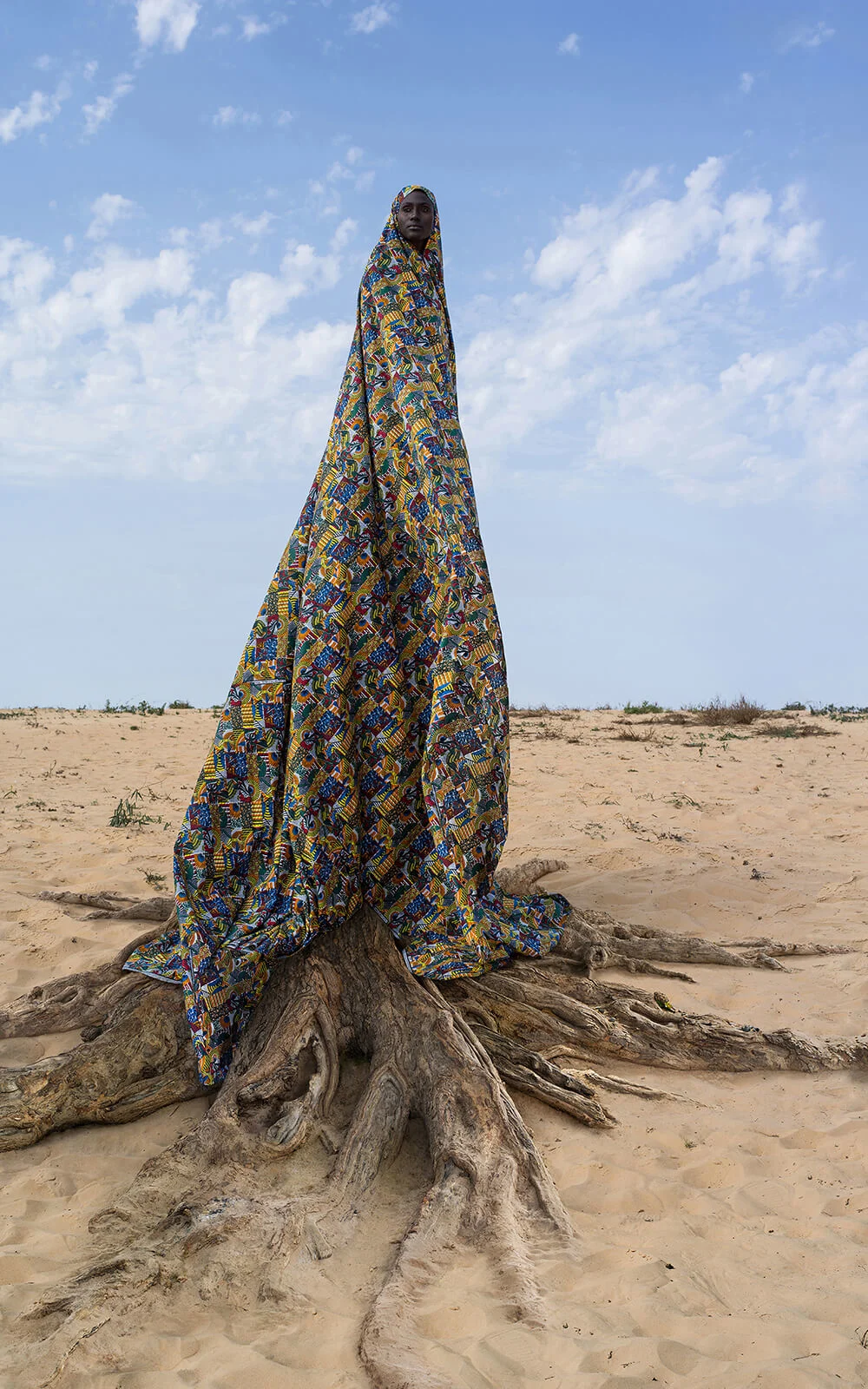
In her series Beyond the Border, women have branches and seeds growing from their bodies, and one stands on top of a huge, sprawling root, as if she herself is the tree those roots grew into. Their spirits seem to be leaving their bodies and intertwining with everything around them. The lightly closed eyes of the characters, their serenely flowing costumes and the green or blue-painted backdrop immediately create a dreamlike world, and Maïmouna creates all of her own sets and backdrops by hand. “It is essential that the result doesn’t look like a person in costume, but like a mystical and transcendental character,” she says. “Symbolic objects, theatrical costumes, and slightly emphatic poses help with this metamorphosis: from the quotidian to the sacred.”
Nature is one of the key themes Maïmouna returns to in every series. “Humanity and nature are intimately interconnected. Each individual is connected to everything that exists on earth, and it follows that the fate of our planet is influenced by our own individual actions,” she says. Maïmouna is deeply inspired by the tale of the Tuba tree, a sacred tree mentioned in some Islamic scriptures, which has the power to heal everything around it. To me trees represent a metaphysical bridge between heaven and earth,” she says.
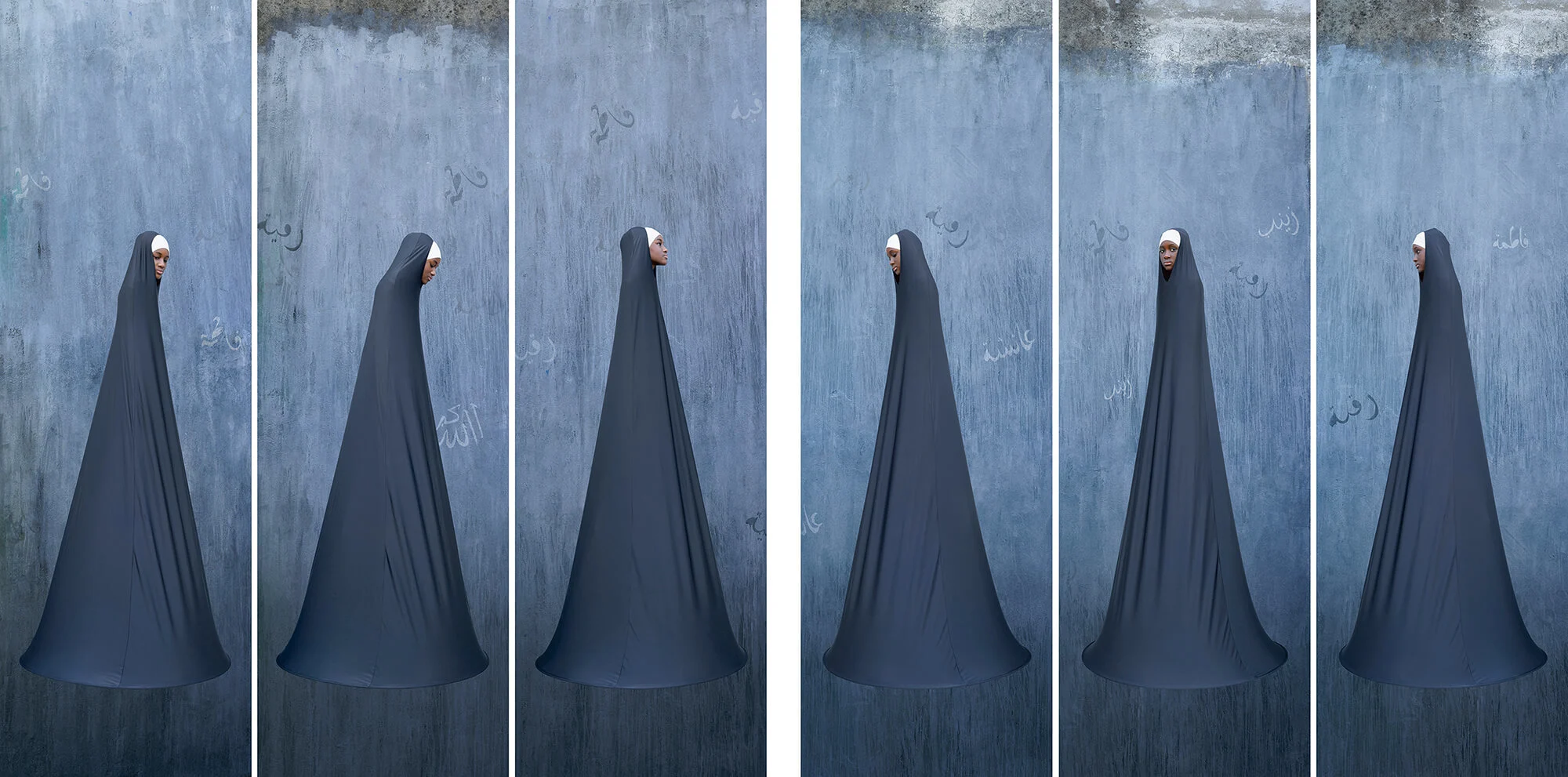
It’s about capturing this metamorphosis from the quotidian to the sacred.
Maïmouna pursued sculpting for some time, and the understanding of physicality and form it gave her is visible in her photography work now. Her series Aisha in Wonderland shows the inner spiritual world of one woman on her journey through life. In all the photos, she wears long, flowing robes and headscarves that change her silhouette entirely, and her clothes are adorned with the same patterns as the scenery behind her. Aisha’s face is visible in every photo, showing that she’s a live person, but these subtle changes Maïmouna makes to her environment make her appear like a sculpture at times, an inanimate object that floats through each scene, which adds to the sense she has found peace with the world.
Elsewhere in the series, Maïmouna finds other ways to show Aisha leaving and transcending her immediate physical body. In one image, the scene is split into segments, with Aisha’s body stuck in one of them. She reaches out, crossing the border, as if reaching into another realm of existence. In another photo she’s shown standing still in a red robe, and red threads are expelled from her silhouette, zig-zagging along the walls, as if some part of her being is spreading around the space.
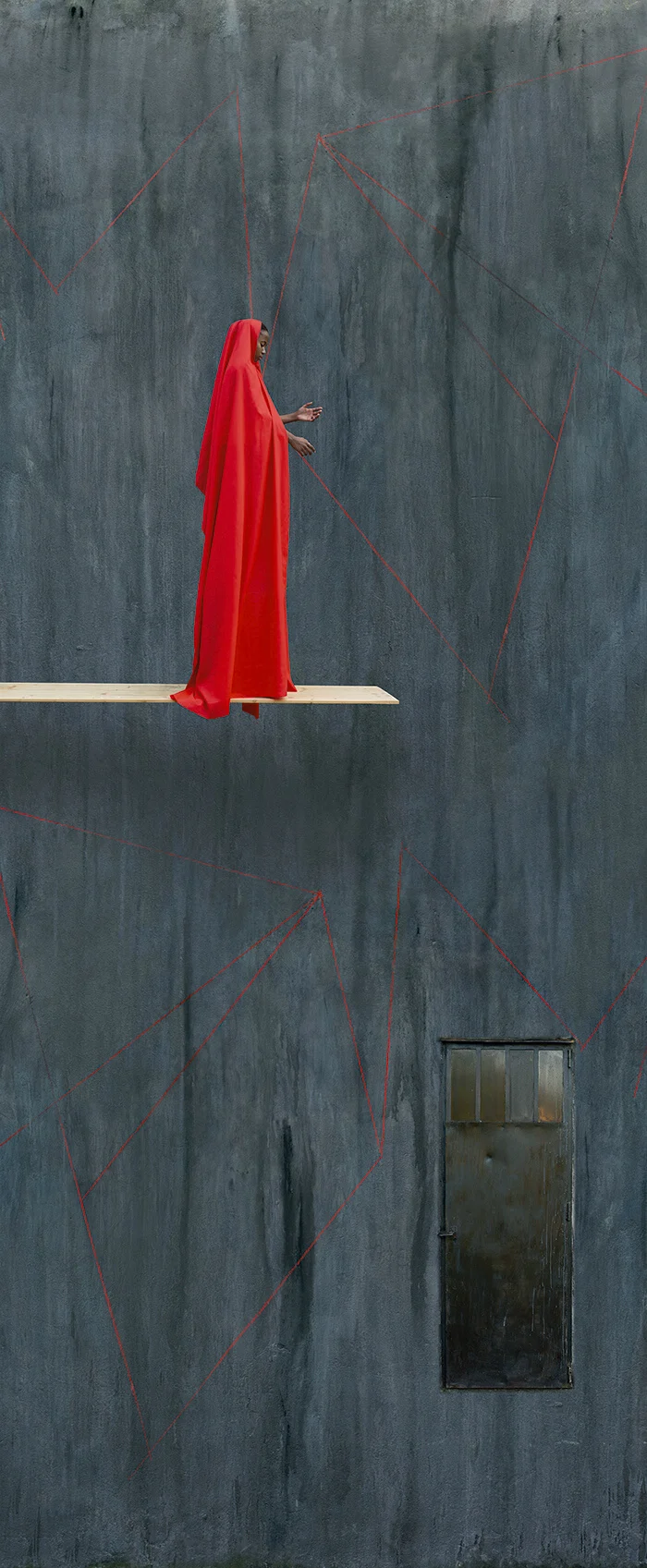
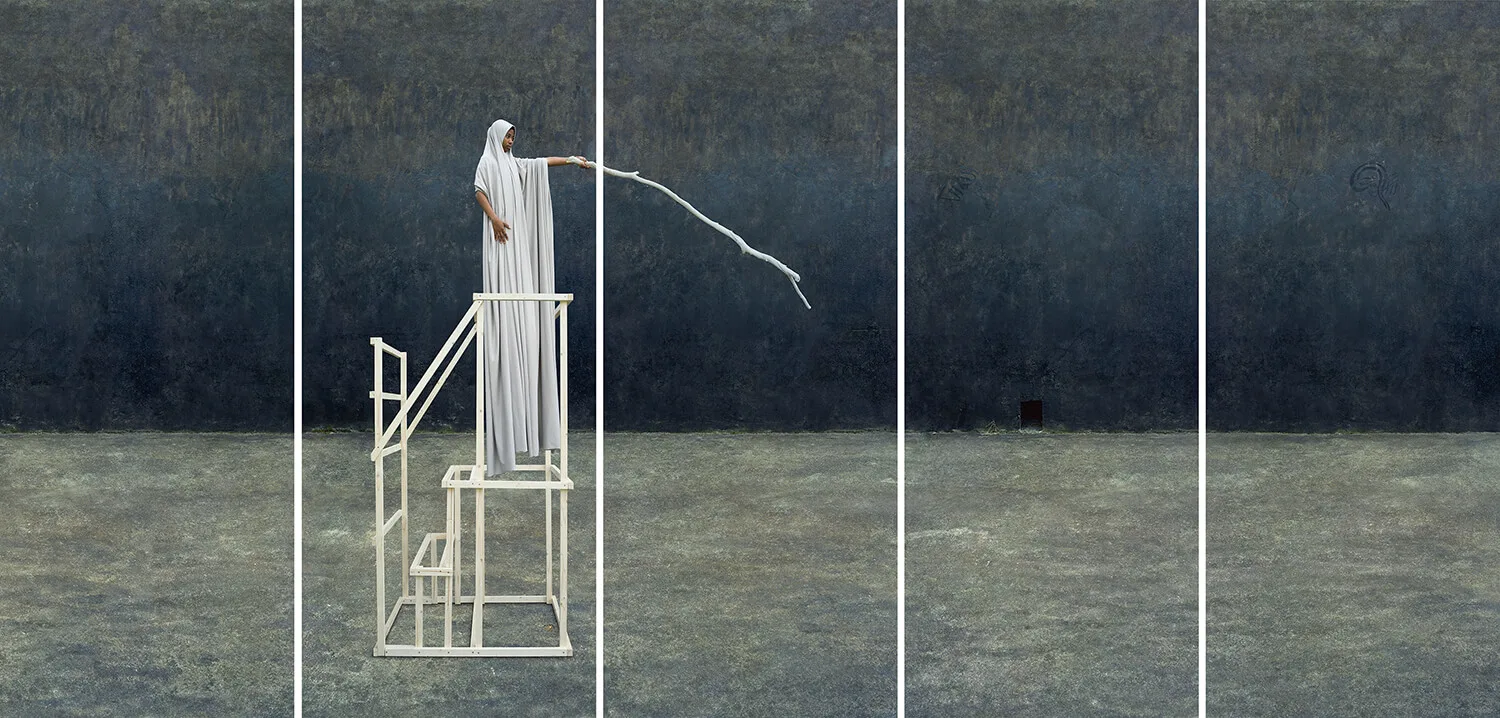
Rather than being the protagonist in the series, Aisha is a medium through which the viewer can explore what a spiritual world looks like. “Through her gaze, we can access the hidden universe that opens up to a person when they embark on a physical and spiritual evolution,” Maïmouna says. Like Aisha, Maïmouna is also going through such an evolution, and through all of her photography projects, we’re seeing the world that she lives in as she moves towards spiritual enlightenment, and as she explores ways to translate that experience to us visually.
“My wish is to lead the viewer into an inner universe, one that goes beyond the image itself,” she says. “Often, in my photographs, the characters show supernatural faculties. They float in the air, blend in with nature, communicate telepathically. All this is possible thanks to this extraordinary dimension in which they find themselves on their search for spirituality. A cosmic, timeless and ahistorical space.”

